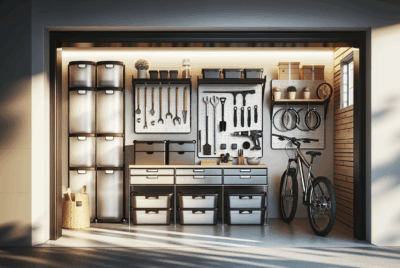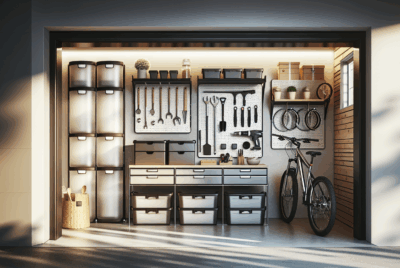Tips on How to Organize for a Successful Garage Sale
As an Amazon Associate, I earn from qualifying purchases, at no additional cost to you. Disclaimer
Have you ever thought about all the clutter accumulating in your garage or attic? Organizing a garage sale can seem like a daunting task, but with a bit of planning and creativity, you can turn your unwanted items into someone else’s treasures and make some extra cash along the way. Here’s your friendly guide on how to organize a successful garage sale, packed with practical tips to help you along the way.

Click Here to Organize Your Garage Today
Begin with Decluttering
Assess Your Belongings
Start by taking inventory of your items. Consider going through one room at a time to avoid feeling overwhelmed. Be honest with yourself about what you really use and need. Those old kitchen gadgets, outdated clothes, or neglected toys can find a new life in someone else’s home.
Sort and Categorize
Once you’ve gathered everything you might want to sell, sort your items into categories. Grouping similar items together not only makes things more manageable for you, but it’s also more appealing and easier for shoppers to browse. Consider categories like clothing, books, kitchen items, and toys.
Plan Your Sale
Choose the Right Date
Finding the right date for your sale is crucial. Weekends, particularly Saturdays, are typically best as most people are off work. Check your community calendar to avoid clashes with local events that might draw potential customers away. Seasonal weather can also affect the turnout, so aim for a clear, dry day if possible.
Set a Time Frame
Generally, garage sales do well in the morning, as early risers tend to be serious buyers. A good timeframe might be from 8 a.m. to 2 p.m., allowing you to capture the crowd without dragging on all day.
Click Here to Organize Your Garage Today
Advertise Your Sale
Leverage Online Platforms
One of the most effective ways to advertise your sale is through online platforms. Websites like Facebook Marketplace, Craigslist, and local community forums are great places to post about your event. Be sure to include clear photos of some of the key items, the date, time, and address of your sale.
Create Eye-Catching Signs
Create simple yet striking signs to place around your neighborhood. Use bright colors and large fonts to ensure they’re visible from a distance. Make sure each sign includes the basic details: “Garage Sale,” date, time, and address.
Price Your Items Wisely
Set Reasonable Prices
Price your items fairly by considering what you would pay for them if you were the buyer. Research similar items online if you’re unsure, but remember garage sale prices are typically much lower than retail or online prices.
Label Clearly
Every item should have a clear price tag. Use stickers or masking tape so there’s no confusion. You might also group smaller items together in a “bargain bin” and mark them with a single price, like $1 each.

Click Here to Maximize Your Garage Space
Prepare Your Display
Organize Efficiently
When setting up your sale, think like a retail store. Place larger items like furniture and appliances near the road to draw attention. Use tables to display smaller items and arrange them neatly to ensure everything is easy to see.
Make It Interactive
Interactive setups can encourage more buying. If you’re selling electronics or appliances, set up a little test area with an extension cord so buyers can check items before purchasing.
Enhance Your Customer Experience
Be Friendly and Approachable
Greet your potential customers warmly as they approach. A friendly smile and a bit of small talk can create a welcoming atmosphere and make people more comfortable browsing.
Be Ready to Negotiate
Expect potential buyers to haggle over prices. Decide in advance how flexible you want to be with your pricing to avoid surprises. Sometimes selling items for less is better than not selling them at all.
Ensure Smooth Transactions
Have Ample Change
Prepare a cash box with plenty of small bills and coins. As garage sales run mostly on cash, being able to provide change for a $20 bill early in the day can be crucial.
Consider Electronic Payments
In today’s digital age, offering electronic payment options like PayPal or Venmo can be convenient for both you and your buyers, potentially increasing sales.
Post-Sale Tasks
Handle Unsold Items
Decide ahead of time what to do with items that didn’t sell. You can donate them to a local charity, keep a few for another sale, or dispose of them if they’re beyond use.
Reflect and Learn
After your sale, take some time to reflect on what went well and what could be improved. Jot down notes on customer comments or your price strategy to help make your next garage sale even more successful.
Conclusion
Organizing a garage sale is not just about getting rid of unused items; it’s an opportunity to connect with your neighbors, be environmentally conscious by recycling items, and perhaps even learn something new about yourself and your community. So go ahead, and transform your clutter into something valuable for both you and your eager shoppers.




